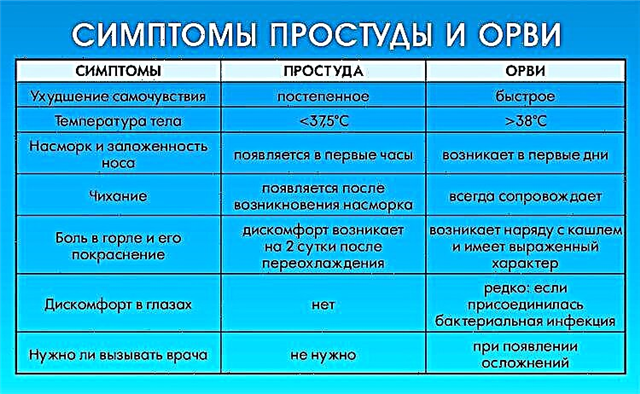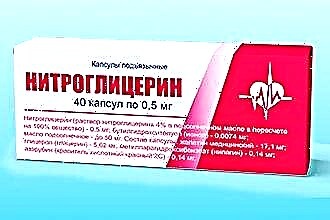Such a pathological condition as laryngeal edema can be a symptom of various diseases. The throat can swell as a result of inflammation caused by infectious diseases, allergies, injuries, after being in a room with very dusty or polluted air. Despite the fact that the symptom is the same, in each case an individual approach to treatment is required, which will help eliminate discomfort in the throat.
Causes
 A large number of different factors can trigger throat swelling. In order to understand the swelling in the throat, what it is and why it occurs, it is necessary to find out the main reasons that provoke the swelling. Among the main factors are:
A large number of different factors can trigger throat swelling. In order to understand the swelling in the throat, what it is and why it occurs, it is necessary to find out the main reasons that provoke the swelling. Among the main factors are:
- inflammatory processes of the nasopharynx;
- allergy to the use of drugs, drinks, food;
- damage to the throat by foreign objects, such as fish bones;
- thermal burn with too hot liquid or air;
- exacerbation of severe chronic diseases such as tuberculosis or syphilis;
- X-ray examination of the cervical spine;
- various infectious diseases such as measles, scarlet fever, flu;
- various kinds of neoplasms in the nasopharynx, for example, papillomas;
- disturbances in the work of the circulatory system caused by compression of veins or lymphatic vessels;
- inflammatory processes of cartilage in the nasopharynx.
Important! Pathologies of the cardiovascular system, abnormalities in the functioning of the kidneys and liver can also often be the cause of laryngeal edema.
Laryngeal edema is most often a sign that pathological processes are taking place in the body. In the vast majority of situations, this symptom occurs as a result of inflammation that develops in the tissues of the pharynx. Provided that the swelling of the throat is caused by a viral or bacterial infection, most often the pathological process will be associated with inflammation of the tonsils and laryngeal mucosa. Allergic reactions are accompanied by pronounced swelling of the throat mucosa, as well as symptoms such as lacrimation, rhinitis, hyperemia of the skin of the face.
Symptoms
Any of the possible causes of laryngeal edema corresponds to a number of symptoms that help specialists to correctly diagnose and prescribe effective treatment. If the throat is swollen, there are a number of common signs that are characteristic of this disease:
- painful sensations when swallowing in the area of the mucous throat, which resemble the symptoms of tonsillitis;
- the neck may hurt, the pain is aggravated when the head is turned;
- signs of body poisoning: the patient complains of a headache, fever;
- hoarseness, change in voice;
- the neck may swell, part of the face may swell;
- hyperemia, in which the back of the throat swells;
- feeling of a foreign object in the throat;
- annoying dry cough.
When a person is just starting to get sick, it is difficult to recognize the cause, since insignificant discomfort and shortness of breath are distinguished among the main symptoms. As the pathology develops, pain occurs, which increases when swallowing food, since edema contributes to the narrowing of the lumen in the throat.
In the later stages, edema can cause an attack of suffocation, which is extremely dangerous for a person's life.
Also dangerous is the situation when the swelling spreads to the mucous surface of the vocal cords. In this case, the above symptoms become more pronounced. The swelling may increase, with the growth period often taking several hours to several days, depending on the cause of the symptom. In this case, you should immediately consult a doctor.
If a person is in a very dusty room for a long time or inhales air in which various kinds of irritants are present, this can cause an allergic reaction of the body. Most often, allergies cause swelling, redness, swelling. If the throat is affected, breathing may be difficult. Also, allergization of the body is often accompanied by increased salivation, lacrimation, rhinitis.
In the case when laryngeal edema is not accompanied by symptoms of allergies, fever and other symptoms characteristic of most diseases, it can be caused by various kinds of injuries. For example, eating too hot or cold food, getting into the nasopharynx of chemicals (alcohols, vinegar, various kinds of acids), damage to the mucous membrane of the throat (scratches, wounds) when swallowing solid food, all this can cause swelling of the throat.
- A chemical burn of the larynx is the most dangerous cause of pharyngeal swelling. In this case, the patient experiences severe sore throat, swelling. After recovery, rough scars remain on the pharyngeal mucosa, which, narrowing the esophagus, complicate eating and breathing.
- Thermal burns of the larynx occur most often after eating too hot food or drinks. In this case, the patient experiences a burning sensation in the oral cavity and pharynx, the mucous membrane is hyperemic and edematous, depending on the severity of the burn, erosion and ulcers may occur. If scarring occurs, there is a possibility of breathing problems.
- Mechanical damage to the throat, leading to its swelling, can occur due to foreign objects entering the throat. If the injury affects the laryngopharynx area, it can cause a choking attack.
Important! If your throat is swollen, excessive alcohol consumption may be the cause. In this case, the disease may also be accompanied by swelling of the face, edema of the extremities.
Puffiness in the throat after drinking intoxicating drinks indicates that an excessive amount of fluid has accumulated in the tissues, as well as the functioning of the excretory system and the blood supply system is impaired.
Diagnostic methods
 In order to prescribe the correct and effective treatment, it is necessary to determine the causes of the disease. Therefore, a number of diagnostic procedures should be carried out, which are most often based on a detailed examination and questioning of the patient. In this case, consultation of an otolaryngologist, phoniatrist or ENT surgeon is most often required.
In order to prescribe the correct and effective treatment, it is necessary to determine the causes of the disease. Therefore, a number of diagnostic procedures should be carried out, which are most often based on a detailed examination and questioning of the patient. In this case, consultation of an otolaryngologist, phoniatrist or ENT surgeon is most often required.
The main procedures that doctors carry out in case of shortness of breath:
- laryngoscopy (direct and indirect) of the larynx;
- bronchoscopy - a procedure for examining the mucous membranes of the trachea and bronchi using an endoscope;
- X-ray of the pharynx area;
- tomography;
- a general blood test and an analysis for immunoglobulins to determine the type of pathogenic microorganism and to exclude allergies.
In order to determine the causes of the swelling of the throat, doctors often use instrumental diagnostics for diagnostic purposes. These methods include:
- Microlaryngoscopy - used to determine the presence of a foreign object in the throat, the presence of a tumor, scars, neoplasms that can provoke difficulty breathing. Within the framework of this method, endoscopic biopsy and histological analysis are also used to determine possible changes in the nasopharynx.
- Study of the functions of the vocal cords. This method includes phonetography, stroboscopy and electroglottography. It is carried out with edema of the vocal cords to determine the degree of their mobility and general condition.
- Computed tomography and magnetic resonance imaging of the larynx, ultrasound of the thyroid gland, and x-rays of the lungs are also effective ways to determine the cause of edema.
Treatment
After analyzing the symptoms of the disease and carrying out diagnostic procedures, you can find out the cause that caused the unpleasant symptom. Treatment of throat edema is primarily aimed at reducing the severity of the symptom, minimizing pain and normalizing breathing.
- If the cause of the swelling in the throat is an allergy, you must try to eliminate the cause that caused the symptom, take an antiallergic drug (Suprastin, Diazolin, Loratadin), in more severe situations, you can use corticosteroids (Dexamethasone, Prednisolone).
- To treat puffiness caused by a foreign object stuck in the throat, the first step is to remove it. After that, to reduce pain and inflammation, it is recommended to use rinsing the throat with decoctions of chamomile or sage, as well as use sprays with antiseptic, anti-inflammatory and analgesic effects (Ingalipt, Stopangin).
 Puffiness caused by infectious diseases of various natures is treated in accordance with the pathogenic microorganisms that caused it. If the cause of inflammation is a bacterial infection, it is necessary to use antibiotics (Augmentin), in case of a viral infection, antiviral drugs (Remantadin, Arbidol) should be used.
Puffiness caused by infectious diseases of various natures is treated in accordance with the pathogenic microorganisms that caused it. If the cause of inflammation is a bacterial infection, it is necessary to use antibiotics (Augmentin), in case of a viral infection, antiviral drugs (Remantadin, Arbidol) should be used.- If the swelling of the throat interferes with breathing, then methods such as intubation or incision of the trachea are used to resume breathing and supply oxygen to the lungs.
- If the swelling of the throat occurs very often, that is, there are chronic diseases that cause this symptom, surgical intervention is often required. Surgery is usually aimed at removing scars and growths that are preventing proper breathing.
In order to prevent the occurrence of allergic swelling of the throat, as well as to reduce the likelihood of developing infectious diseases, doctors recommend:
- good nutrition;
- drinking a sufficient amount of liquid (at least 2 liters per day);
- control of temperature and humidity in the room (20-22 degrees Celsius and 50%, respectively, are considered optimal);
- irrigation of the nasopharynx with saline solutions.
Unilateral throat swelling
If the throat is swollen only on one side, then most often a similar symptom indicates the presence of a viral or bacterial infection, when pathogenic microorganisms are localized only on one side of the pharynx.
With tonsillitis, asymmetric edema is often observed, while the one-sidedness of the inflammatory process is also noticeable from the face.
Also, among the reasons that cause swelling of the throat on only one side, it is possible to distinguish mechanical damage to the mucous membranes of the pharynx. Stuck fish bones, swallowing sharp objects, solid food, all of these can cause one-sided edema.
Methods for diagnosing and treating unilateral sore throat will be similar to those used for bilateral swelling of the laryngeal mucosa. Effective therapy will be based on an analysis of the causes of the disease.

 Puffiness caused by infectious diseases of various natures is treated in accordance with the pathogenic microorganisms that caused it. If the cause of inflammation is a bacterial infection, it is necessary to use antibiotics (Augmentin), in case of a viral infection, antiviral drugs (Remantadin, Arbidol) should be used.
Puffiness caused by infectious diseases of various natures is treated in accordance with the pathogenic microorganisms that caused it. If the cause of inflammation is a bacterial infection, it is necessary to use antibiotics (Augmentin), in case of a viral infection, antiviral drugs (Remantadin, Arbidol) should be used.

